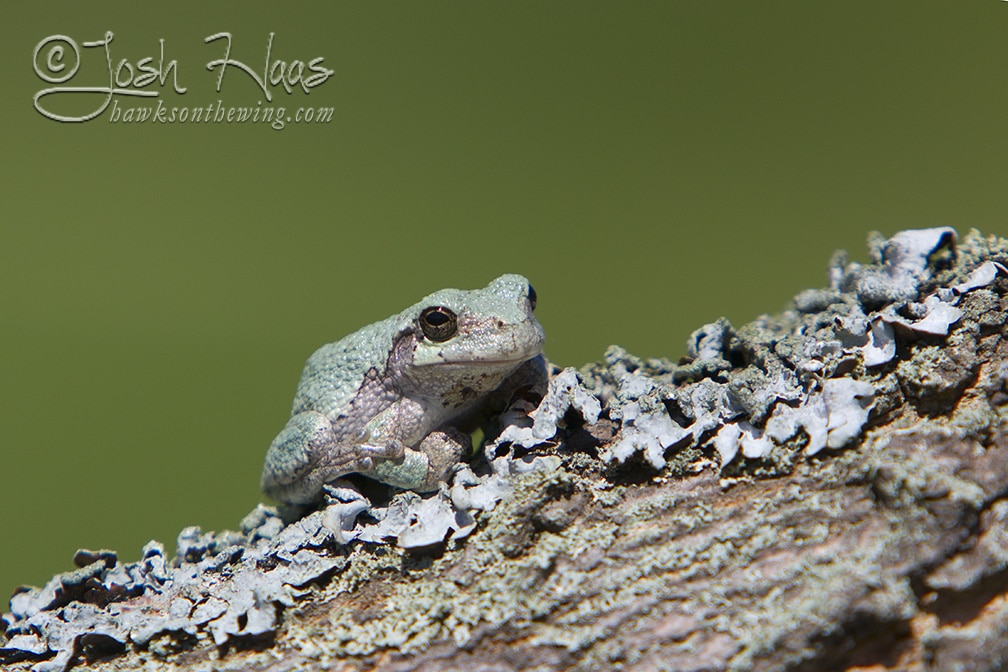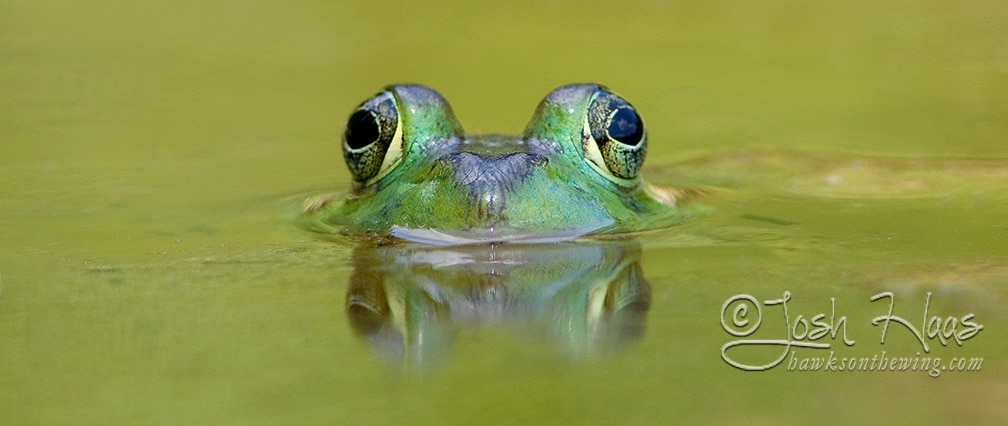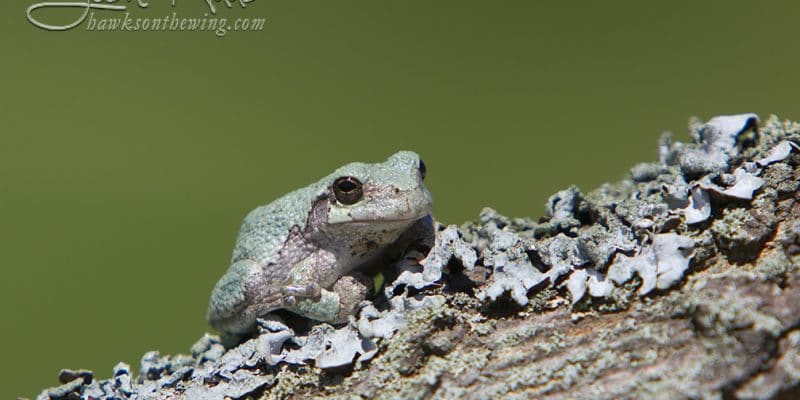
By May, Spring Peepers and Chorus Frogs are still going strong, Tree Frogs have joined in and the melodious trills of American Toads combine to make a sound that can pierce through even the most insulated windows. The good thing is this tells us we have good habitat for a diverse set of Frog and Toad species. So what makes for great Frog and Toad habitats? Generally speaking, Frogs need water and while Toads burrow in moist areas in the ground they spend much more time away from water. Either way, they all seem to prefer burrows or some sort of ground clutter to be as secretive as possible. Amphibians are cold-blooded animals so they rely on their surroundings to regulate their temperature. Frogs can be active in cooler temperatures but have to find protection when the temps dip below freezing. This begs the question, especially in the mid-west, where do they go in the winter? Most frog species go into a dormant state either by burrowing into the mud underwater or in the case of toads burrowing in a similar fashion but into woodland soil instead.


